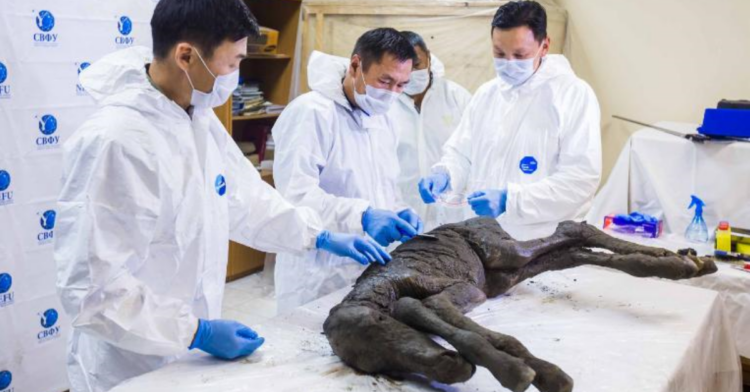Although it can sometimes feel like we’ve already seen everything the world has to offer, it still finds a way to surprise us every now and then. Although we tend to use the metaphor of the world being small to express how connected we are nowadays, that’s only true as a metaphor.
The world is still large enough to hide all sorts of secrets, particularly in its more remote regions. And between the recent discovery of a 28,000-year-old mammoth and the landmark find we’ll be discussing today, that reality is giving scientists a lot to examine.
Last summer, people looking for mammoth tusks were combing through the Verkhoyansk region of Siberia.

According to CNN they braved temperatures of -90 degrees Fahrenheit while doing this and it paid off when they discovered an ancient horse in the permafrost.
According to Mammoth Museum director Semyon Grigoriev, the foal was just two-weeks old when it drowned in mud 42,000 years ago.

As he told CNN, “An autopsy showed the foal carcass was extremely well-preserved, the body even without deformation. The hair cover also preserved most parts of the carcass, especially at the head and legs.”
This fur preservation is rare and told scientists what color now-extinct horses in the Pleistocene era had, but one thing about this foal was even rarer.

And that concerned the fact that even after so many thousands of years, the foal had managed to hold on to liquid blood and urine.
There’s only one other case of liquid blood from the Pleistocene epoch, which lasted between 2.6 million and 11,700 years ago, that scientists are aware of.

And that came from a mammoth discovered at Little Lyakhovsky Island off the northeastern coast of Russia back in 2013.
Even in cases where ancient animals are well-preserved, the blood usually coagulates or even turns into powder before anyone gets to it.

As Grigoriev told CNN, “This is due to mummification when moisture and other biological fluids gradually evaporate over thousands of years, even if the remains are in the permafrost.”
But since that’s not what happened in this case, scientists at Northeastern Federal University extracted these fluids in the hopes of cloning the foal.

They’re doing this in collaboration with the Sooam Biotech Research Foundation in South Korea, which landed in controversy after their lead scientist, Hwang Woo-suk, faked his supposed success in cloning human stem cells.
However, their choice in partners is not why the prospects of cloning the foal seem unlikely at the moment.

According to Grigoriev, even well-preserved blood has no chance of making cloning possible if its red blood cells don’t have any nuclei with DNA, which the foal’s blood is unlikely to have.
Still, it’s not impossible that they’ll get lucky and find some intact, usable cells.

And whether they do or not, the 42,000-year-old foal is expected to tour Japan between June and September of next year.
h/t: CNN

















































